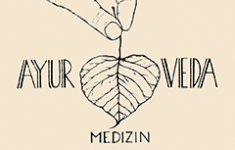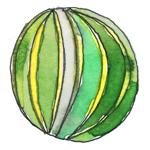
About Ayurveda
History/ Origin
The name derives from Sanskrit, one of the oldest languages in the world. It is of Indo-Germanic origin. Today it is only spoken in a small part of India and appears in some Buddhist poems. Sanskrit is the language of Ayurvedic medicine.
Translation from Sanskrit
- Ayus= Life
- Veda = Knowledge/Science
The great sages, the so-called Rishis, in the Indus Valley areas of that time (today's Sri Lanka, India, Pakistan, Nepal, Bangladesh) have passed on a knowledge, which was created by the observations, measurements and evaluations of the people, the animals, the nature, the seasons and the mode of action of the plants.
This science is still taught and applied today.
Today, Ayurvedic medicine is internationally recognized by the WHO as an independent traditional system of medicine.
In the medical textbooks, collected works, the so-called Samhitas, this science was recorded in verse form in Sanskrit. There are three large and three small compilations from which the physicians of that time, who learned from the famous medical scholars of that time, and from which is taught until today at the universities of today's aspiring Ayurvedic physicians.
This knowledge is still being taught and applied today.
The first texts date from the 6th century BC.
Ayurveda is not only considered of WHO as one of the oldest health systems in the world, but also as the best documented healing arts of ancient times.
Philosophy
«Whatever we can do ourselves to strengthen our own health works better than what others do for us» (David Frawley, contemporary Ayurveda expert)
The three main pillars of Ayurveda philosophy are based on
- The Self = Atman
- Mind = Manas
- Body = Sharira
- Sensory Perception = Indria
As these are all equally important they are all taken into consideration in Ayurveda
Physical-chemical principles of Ayurveda
All living beings are the microcosm in the macrocosm and the microcosm depends on the macrocosm.
Both consist of the same 5 elements, the so called Pancha Mahabhutas
(Pancha= 5, Mahabhutas= elements):
- Air= Vayu (qualities: dry, movable, rough, cold, light, not slimy, subtle, reducing)
- Ether = Akash (qualities: soft, light, subtle, not slimy, smooth, penetrates into finest openings)
- Water = Apo/Jala (qualities: fluid, oily, heavy, cold, sluggish, soft, slimy, moves according to the gravity)
- Fire = Agni / Teja (qualities: hot, penetrating/sharp, flickering, fine, dry, not slimy)
- Earth = Pritvi (qualities: heavy, rough, hard, gross, not slimy, fixed)
All living beings are made up of these 5 elements.
These five elements and specifically their qualities are the basis of micro- and macrocosmic creation.
These qualities must be balanced in the living beings so that they can growth and good health is possible.
Constitutions/Bioenergy - The three Doshas : the problem causing factors
Communication between the body and the mind is not simple, because the body is formed of gross matter and the mind of subtle matter.
That is why a mediating principal is necessary between the two.
This principal is called Dosha (dosha = problem causing factor)
There are three Doshas: Vata, Pitta, and Kapha.
They give living beings their individual constitution and regulate their physical and mental abilities. They are combinations of the 5 elements: water, air, ether, fire and earth and their qualities are both gross and subtle.
These three Doshas make up the constitution of each living being, as one or two prevail in each of us. Each Dosha consists of two elements with their qualities:
VATA = air and ether
The principle of movement
Qualities:
Dry, cold, light, subtle, mobile, clear.
Resulting Vata functions:
Movement
Breathing
Setting activities in motion
Stimulation of the digestive fire
Excretion
Embryo development
Responsible for sensory perceptions
Formation and development of the pathways
Speech
High spirits
Enthusiasm
Creativity
PITTA= Fire and Water
Energy principle
Qualities:
little oily, hot, penetrating/spicy, fluid, acidic, flowing, pungent.
Resulting Pitta Functions:
Digestion
Catabolism
Vision
Heat
Generates energy
Skin color
Bravery
Rage / Anger
Intellectual things
Hunger
Thirst
perseverance/ strong will
KAPHA= water and earth
Structure principle
Qualities:
Heavy, cold, soft, oily, sweet, stable, slimy.
The principle of development and structure
The resulting Kapha functions are:
- physical strength and resistance against diseases
- anabolism
- potency
- oiling and lubricating the body tissue
- lubrication of joints
- nutrition
- tolerance
- contentment
- patience
- stability
When these three Doshas are balanced in the human being, they create positive changes.
Anatomy, physiology and psychology are therefore not separated in Ayurveda medicine.
Diseases are also attributed to these elements, i.e. to their qualities.
The Ayurveda practictioners task is to recognize the Doshas their patients are born with, the so-called Prakriti, and bring these into balance again, i.e. to reduce the qualities of the existing imbalance, i.e. the Vikritri.
Multiple factors can influence the constitutions/Doshas of a person before and after birth.
Influential factors before birth:
- Composition of the five elements
- Quality of the parents sperm and ovum (genetic)
- Time and season of conception
- Atmosphere within the uterus
- Nutrition and lifestyle of the mother
Influential factors after birth:
- Social status
- Culture
- Family
- Trauma
- Spatial factors, environment, country of origin
- Era
- Age
Thus a complex anamnesis and diagnosis are necessary in order to establish the elements and their qualities, which need to be increased or decreased in a person.
Mind (Mana)
The mind is looked at from a different perspective.
The three basic principles of Mana are the three Gunas (mental qualities):
- Rajas= activity, restlessness, anger, ego
- Tamas = sluggishness, darkness, passiveness
- Sattva= purity, harmony, kindness, clarity
In order to achieve stable mental, i.e. psychological health, Sattva needs to prevail over the other Gunas.
The Gunas are also described as the fundamental forces in the creation of the world.
The principle of the Digestive Fire
Agni (=fire)
This is our digestive force. Our digestive fire and energy will be used in different ways depending on the components, the quality and the quantity of the food we eat.
Agni is by nature «sour» and thus also responsible for the composition of food.
There are different Agnis:
- The main digestive fire (the main digestive principle)
- The element fire (decomposition depending on the qualities of the elements)
- The tissue fire (distribution to the different tissues)
- As the state of our health and the way we fell are closely related to our digestive force, it is one of the main focuses of treatment in Ayurveda.
Primary and Secondary tissues
Dhatus & Upadhatus
Ayurveda looks at the quality and quantity of the following primary tissues as well as their secondary tissues:
- Plasma (secondary tissues: breast milk and female reproductive substances)
- Red blood cells (secondary tissues: blood vessels and tendons)
- Muscle tissue (secondary tissues: skin and fat tissue)
- Fatty tissue (secondary tissues: ligaments and nerves)
- Bone
- Bone marrow
- Reproductive tissue
- Ayurveda also takes into account waste products: stool, urine, sweat, hair and nails.
Health and Disease in Ayurveda
The aim is two-fold:
1. Maintaining and building up the health of the healthy person
2. Eliminating the disease of the sick person
The Ayurveda definition of health:
Svastha
Svastha means: to stand on your own - to be with yourself. It means more than just the absence of disease.
Ayurveda takes into account not only the mind and the body of human beings but also their soul. To know and live your own inner nature is the prerequisite to achieve a long, healthy and fulfilled life
Ayurveda is truly holistic, it integrates medical, therapeutic and philosophical aspects, making it a system that unites and integrates instead of separating.
In Ayurveda diseases are described as a disharmony and imbalance of the inner equilibrium.
In Ayurvedic medicine prevention and treatment are equivalent goals.
This is why it clearly distinguishes itself from other medical systems.
Ayurveda does not only treat the symptoms or the disease but the whole person.
In Ayurveda, in order to be considered healthy, seven conditions are needed so that the soul, the mind, the body and the sensory perceptions are balanced.
These are:
1. Equilibrium of the Doshas
2. Equilibrium of the digestion and metabolism
3. Good tissue quality
4. Balanced excretory functions
5. Normal functioning of sensory and movement organs
6. Joy and clarity of the mind
7. Joy of the soul / Feeling of joy independent of external factors
The six stages of disease development
1. Accumulation
2. Provocation
3. Dissemination, spreading to other areas
4. Localization in tissues, settling in tissues
5. Symptom manifestation (full clinical symptoms)
6. Complications, chronicity
As a professional Ayurveda practitioner it is of great importance to recognize which stage the person has reached so that an appropriate treatment can be prescribed.
There are eight branches (eight faculties) in Ayurveda.
1. Internal Medicine
2. Surgery
3. Ear, Nose and Throat medicines
4. Pediatrics and Gynaecology
5. Toxicology
6. Psychiatry
7. Prevention medicines
8. Aphrodisiac/ Reproductive medicines
Ayurveda treatment methods
Health sustaining treatments, prevention:
- Nutrition
- Body treatments
- Daily routines adapted to a persons constitution
- Seasonally appropriate lifestyle
- Psychological and spiritual measures
- Preventive medicines
- Panchakarma
Disease eliminating, cleansing measures:
Surgical measures
Panchakarma:
- Vamana= therapeutic vomiting
- Virecana= therapeutic purgation
- Asthana Basti= cleansing, liquid enemas
- Anuvasana Basti= nourishing enema with medicated oils
- Nashya = nasal administration of medication
- Raktamokshana= blood-letting
Panchakarma is good for maintaining ones health as well as fighting disease, which is precisely the main goal of Ayurveda. Expelling a persons accumulated harmful substances is a highly scientific concept.
A traditional Panchakarma is an in-patient treatment that lasts a minimum of 30 days.
Ayurveda Medicine
- Minerals: gemstones, metals (in the form of ash)
- Animal products: cornea, nails, hair, shells, feathers, milk, urine, secretion, (animal products are used without harming the animals)
- Plant-based products: entire plants, parts of plants such a roots, buds, stems, blossoms, rind, wood, fruits, seeds, secretions such as resin or milk.
Different forms of administration:
- Fresh juices
- Paste
- Decoction
- Eliminating cold water
- Powder
- Pills
- Sirup
- Ghees
- Oils
- Fermented preparations of fresh juices or decoctions
Ayurveda medicines can have reverse effects if the diagnosis is wrong and the treatment is unprofessional. Herbal medicines can have strong effects. Any treatments and medical compounds including medical oils should only be administered by a trained and experienced Ayurveda practitioner.
The preparation of the medicines is of great importance in Ayurveda and therefore the practitioners should be in a state of complete awareness and a life-affirming attitude. To achieve this they chant mantras, prayers and apply other rituals during the preparation process.
Ayurveda uses only organic substances and no synthetic substances at all.
Diseases of the musculoskeletal system (e.g. rheumatism, osteoarthritis, osteoporosis, back and joint complaints as well as other pain topics), diseases of the nervous system (e.g. Parkinson's disease, multiple sclerosis, neuralgia), diseases of the skin (e.g. psoriasis, gout, acne, dermatitis), metabolic diseases (e.g. obesity, diabetes mellitus), diseases of the cardiovascular system (e.g. hypertension, other heart problems), respiratory diseases (e.g. bronchial asthma, bronchitis, rhinitis), intestinal diseases (e.g. gastritis, reflux, opstipation, diarrhea, flatulence, irritable bowel syndrome, ulcerative colitis, Crohn's disease), urinary tract diseases (e.g. cystitis), mental and emotional diseases (e.g. depression, stress disorders, sleep disorders, burnout, trauma incl. PTBS and others, ADHS), ear, nose and throat and other diseases of the head (e.g. (e.g. tinnitus, colds, sinusitis, eye diseases), women's diseases (e.g. menstrual problems, endometriosis, menopause problems, unfulfilled desire to have children), reproduction problems (e.g. unfulfilled desire to have children of men and women) well as immune system weakness (e.g. allergies and other immune deficiencies) and other chronical diseases can be treated with Ayurvedic medicine.
Kumuduni A. S. Röllin
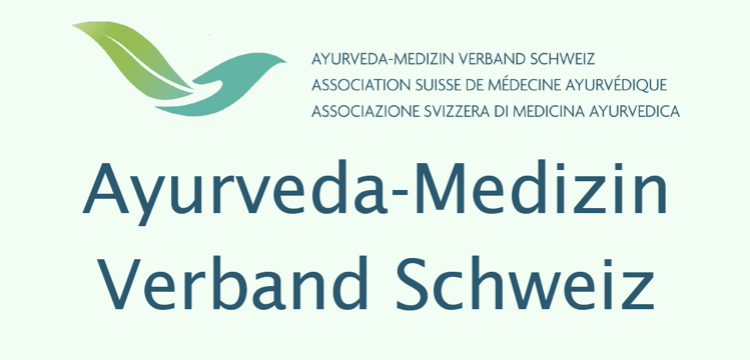
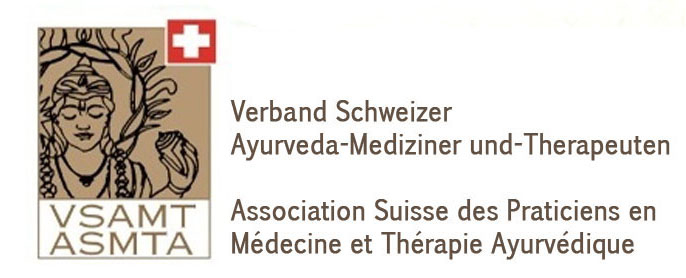
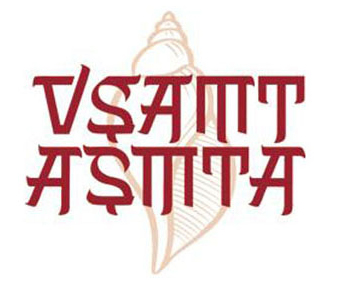
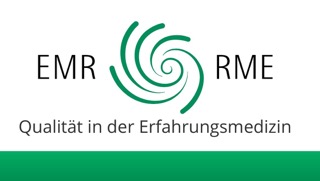
.png)
